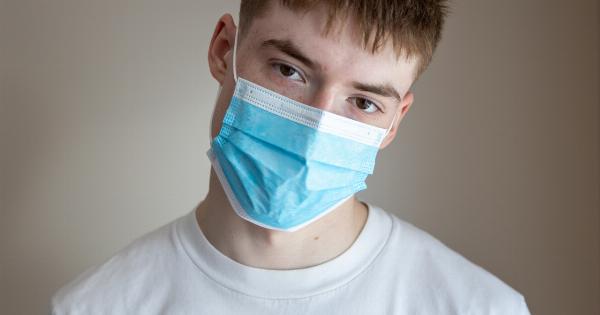The world has witnessed numerous disasters throughout history, from natural calamities such as earthquakes and floods to man-made catastrophes like wars and industrial accidents.
Unfortunately, these disasters not only cause loss of infrastructure and displacement of populations but also lead to the outbreak and spread of diseases. In this article, we will discuss twenty disaster diseases that have the ability to swiftly claim lives in the aftermath of such calamities.
1. Cholera
Cholera is an acute diarrheal disease caused by the Vibrio cholerae bacterium. It spreads through contaminated water and food, and its transmission escalates in disaster-stricken areas lacking proper sanitation and clean water facilities.
Cholera can rapidly lead to dehydration and death if left untreated.
2. Malaria
Malaria, transmitted through the bite of infected mosquitoes, is a leading cause of death during and after disasters in tropical and subtropical regions.
Disruptions in healthcare systems and the displacement of populations often contribute to the rapid spread of malaria, particularly in temporary refugee camps.
3. Dengue Fever
Dengue fever, caused by the bite of infected Aedes mosquitoes, can quickly spread in the aftermath of disasters due to the accumulation of stagnant water.
The symptoms include high fever, severe headache, joint and muscle pain, and in severe cases, it can lead to dengue hemorrhagic fever, which can be fatal.
4. Typhoid Fever
Typhoid fever is a bacterial infection caused by Salmonella enterica serotype Typhi. In disaster zones, contaminated water sources and inadequate sanitation infrastructure create a conducive environment for typhoid outbreaks.
If left untreated, typhoid fever can result in complications and life-threatening situations.
5. Measles
Measles is a highly contagious viral illness that spreads through respiratory droplets. Disasters often lead to overcrowding and limited access to healthcare, increasing the risk of measles outbreaks.
Complications from measles can be severe, especially in malnourished and vulnerable populations.
6. Acute Respiratory Infections
Acute respiratory infections (ARIs) encompass a range of respiratory illnesses caused by various viruses and bacteria.
Disasters, particularly those with a significant impact on infrastructure and living conditions, create an ideal environment for the rapid spread of ARIs. If untreated, severe cases of ARIs can result in pneumonia and respiratory failure.
7. Diarrheal Diseases
Diarrheal diseases are a common consequence of disasters, especially in areas with compromised access to clean water and sanitation facilities.
These diseases, caused by various pathogens including bacteria, viruses, and parasites, can lead to severe dehydration and electrolyte imbalances, posing a significant threat to human lives.
8. Tuberculosis
Tuberculosis (TB) is an infectious disease caused by the Mycobacterium tuberculosis bacterium. Disasters often disrupt healthcare services and limit access to TB medication, leading to treatment interruption and the spread of drug-resistant strains.
TB can be life-threatening, particularly for individuals with compromised immune systems.
9. Chikungunya
Chikungunya is a viral disease transmitted to humans through the bite of infected mosquitoes, primarily the Aedes species. Disasters can exacerbate the presence of such mosquitoes and increase the risk of chikungunya outbreaks.
The symptoms include high fever, joint and muscle pain, headache, and skin rashes. While rarely fatal, severe joint pain can persist for months or even years.
10. Hepatitis A
Hepatitis A is a viral liver disease transmitted through contaminated food and water or close contact with an infected person.
In disaster situations, where basic hygiene and sanitation measures are compromised, the likelihood of hepatitis A outbreaks increases. Although most individuals recover fully, severe cases can lead to acute liver failure and death.
11. Leptospirosis
Leptospirosis is a bacterial disease caused by the Leptospira bacteria, often transmitted to humans through water contaminated by infected animal urine.
Disasters that result in flooding, such as hurricanes or heavy rainfall, create an optimal breeding ground for the bacteria. Leptospirosis can lead to liver damage, kidney failure, and even death if left untreated.
12. Yellow Fever
Yellow fever is a viral disease transmitted by infected mosquitoes, primarily in tropical regions of Africa and South America.
Disasters can enhance the spread of yellow fever by creating suitable breeding spots for mosquitoes and limiting access to preventive measures such as vaccination. Severe cases of yellow fever can result in jaundice, organ failure, and death.
13. Tetanus
Tetanus, caused by the bacterium Clostridium tetani, enters the body through open wounds or cuts. Disasters often result in injuries and wounds that are prone to contamination, presenting an elevated risk of tetanus infection.
Without proper vaccination and wound care, tetanus can lead to muscle stiffness, lockjaw, and difficulty breathing, ultimately proving fatal.
14. Japanese Encephalitis
Japanese encephalitis is a viral infection transmitted through the bite of infected mosquitoes, predominantly in rural agricultural regions.
During disasters, the displacement of populations can expose individuals to unfamiliar environments with higher risks of contracting the disease. Severe cases of Japanese encephalitis can cause inflammation of the brain, leading to coma and death.
15. HIV/AIDS
HIV/AIDS is a global pandemic caused by the human immunodeficiency virus (HIV).
Disasters often disrupt access to healthcare services and hinder the proper distribution of antiretroviral therapy, leading to treatment interruption and increased vulnerability to opportunistic infections. HIV/AIDS can have devastating consequences if not adequately managed.
16. Influenza
Influenza, commonly known as the flu, is an infectious respiratory illness caused by influenza viruses. Disasters that force people into crowded spaces or lead to compromised ventilation systems can contribute to the rapid transmission of influenza.
Severe cases of influenza can result in pneumonia and other complications that can prove fatal, especially in vulnerable populations.
17. Lassa Fever
Lassa fever is an acute viral hemorrhagic illness caused by the Lassa virus. It is primarily transmitted to humans through contact with infected rodents or their excrement.
Disasters that disrupt infrastructure and force populations to seek shelter in unfamiliar environments increase the risk of encountering the virus. Lassa fever can lead to multiorgan failure and, in severe cases, death.
18. Rift Valley Fever
Rift Valley fever is a viral zoonotic disease primarily affecting animals but can also be transmitted to humans through contact with infected animal tissues or mosquito bites.
During disasters, such as floods or heavy rainfall, the risk of exposure to the virus significantly increases. Rift Valley fever can cause severe illness, including encephalitis and hemorrhagic fever, with a high fatality rate in humans.
19. Ebola Virus Disease
Ebola virus disease (EVD) is a severe, often fatal illness caused by the Ebola virus.
While Ebola outbreaks are not directly linked to disasters, the social and economic disruption resulting from disasters can hinder effective control measures and exacerbate the spread of the disease. EVD is characterized by fever, severe bleeding, organ failure, and has a high case fatality rate.
20. Plague
The plague is a bacterial disease caused by the Yersinia pestis bacterium, primarily transmitted through fleas that infest rodents.
While traditional plague outbreaks are rare, disasters that result in the displacement of populations and unsanitary living conditions can increase the likelihood of flea infestations and plague transmission. If not treated promptly, bubonic or pneumonic plague can be fatal.
Conclusion
Disasters not only leave behind physical destruction and trauma but also pave the way for the rapid spread of various diseases.
From waterborne illnesses like cholera and typhoid fever to mosquito-borne infections such as malaria and dengue fever, these disaster diseases can claim lives swiftly if not addressed promptly and effectively. It is crucial for emergency response teams and healthcare providers to prioritize disease prevention, surveillance, and timely intervention to mitigate the impact of these devastating diseases in disaster-stricken areas.































